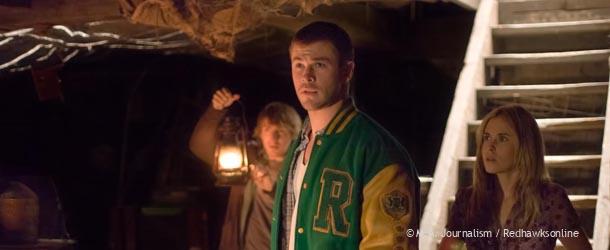Embracing the bloody cliches
Horror movies. Slasher flicks. Shock Films. Jump scares. Horror was once a genre that prevailed in sculpting not only an array of pop culture creatures and masked maniacs, but also a bundle of psychological thrills. Horror used to be a way for movie directors to bring to life their own nightmares so that the audience may experience their own haunted thoughts.
So how did it come to be that a generation which produced the likes of Halloween and A Clockwork Orange evolve into one that is muddled with low budget rip-offs, irrelevant, unwanted remakes, and so many plot-less scripts to make one agonizingly ill?
Welcome to the downfall of a movie-genre. We’ve been bludgeoned over the head with countless bland, bloody films that don’t deserve to stand in the same light as the classics they follow.
However, despite the movie business’ decline in making superb chills, the concept of originality is still floating out in the air, ready to be grasped.
The film that eventually reached its metaphorical hand high enough to get to that point was The Cabin in the Woods.
Constructed from traditional horror clichés, odd-ball characters, and enough twists to make your neck ache, The Cabin in the Woods is coming out on DVD September 18th. Drew Goddard’s debut as a director of film has become notorious in becoming a mix of unique, nostalgia, and spoof.
From the start of the film, all the must-haves for a scary movie are present. Actors in their late twenties to early thirties playing college students, a plot involving vacationing in a remote area far from society and a group of characters consisting of jocks, pot-heads, and attractive women, every ingredient is there to make a common scary movie. As the band of young adults party their way into the second act, the film flip-flops between them and a group of men in lab coats that appear to be observing the “cabin” in the isolated area.
As time goes by, the purpose of these spectators becomes more relevant and interesting, as well as mysterious.
Clichés can be either a screenplay writer’s arch nemesis, or the kind of friend that’s fun to have around once awhile, but only in small intervals.
If used unknowingly and lazily, they can take away enjoyment from the movie watchers. But if done so as a gag or skillfully written as a way to poke at fun or nostalgia in previous works, they can bring laughter and creativity.
The Cabin in the Woods plays off so many of these, yet still it feels fresh and real.
And although at times it can seem too cheesed and over-done, at points becoming so surreal that the audience becomes too befuddled to recognize and appreciate the cleverness, it still has heart. It has an interesting story to tell. It has fun.
Acting in horror movies had melted down to two simple questions: “Can you scream?” and “Can you talk?” If you said yes to both of those questions, congratulations – you just got drafted into “Blood-Sucking Pandas from Camp Wiltonbork: Part XI”. Oh, and if you plan on surviving, you must be a female supermodel.
Thankfully, The Cabin in the Woods discontinues the tradition with characters that break the average expectation – people who would normally get killed first end up surviving and vice versa.
The acting is believable, though at times hammy. It gets the job done, and there are comical points that are landed spectacularly, but the comedy seems to be the only outstanding part about the entire cast.
It should be noted that The Cabin in the Woods is made purely for entertainment.
Anybody looking for a deeper meaning should skip this black comedy and pick up a copy of Silence of the Lambs.
As the move comes to an end, it’s clear what it was meant to do. First, to make you laugh. Second, to make you scream. And third, to shock you with its oddities (the Sigourney Weaver cameo was enough to last most people a long time).
It does its job, and it does it in a way that makes it a good film. Plain, simple, and to the point.

